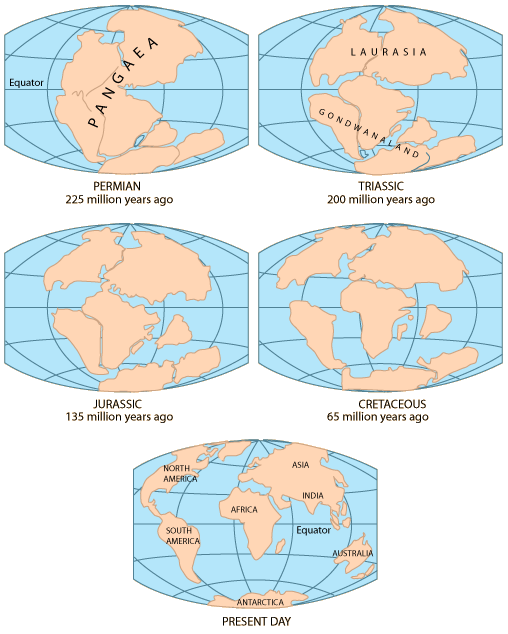Plate Tectonics
The rocky mountains seem high and solidly fixed, but their height is a tiny fraction of the Earth's radius, and they sit atop a likewise thin solid crust on the Earth. Evidence has mounted that sections or "plates" of this solid crust move with time and have made dramatic movements during the time that life has existed on the Earth.

Below is a set of sketches of continent outlines modeled after the USGS site, giving a view of the postulated movements of the continental plates. A major work called The Dyamic Earth is available through the U.S. Geological Survey : http://pubs.usgs.gov/gip/dynamic/dynamic.html . The names Pangaea for the supercontinent and Laurasia and Gondwanaland for the stage after breakup date back to the time of Wegener.

| Some History |
Geophysics Concepts
References:
Ward and Brownlee
Ch 9
| HyperPhysics | R Nave |